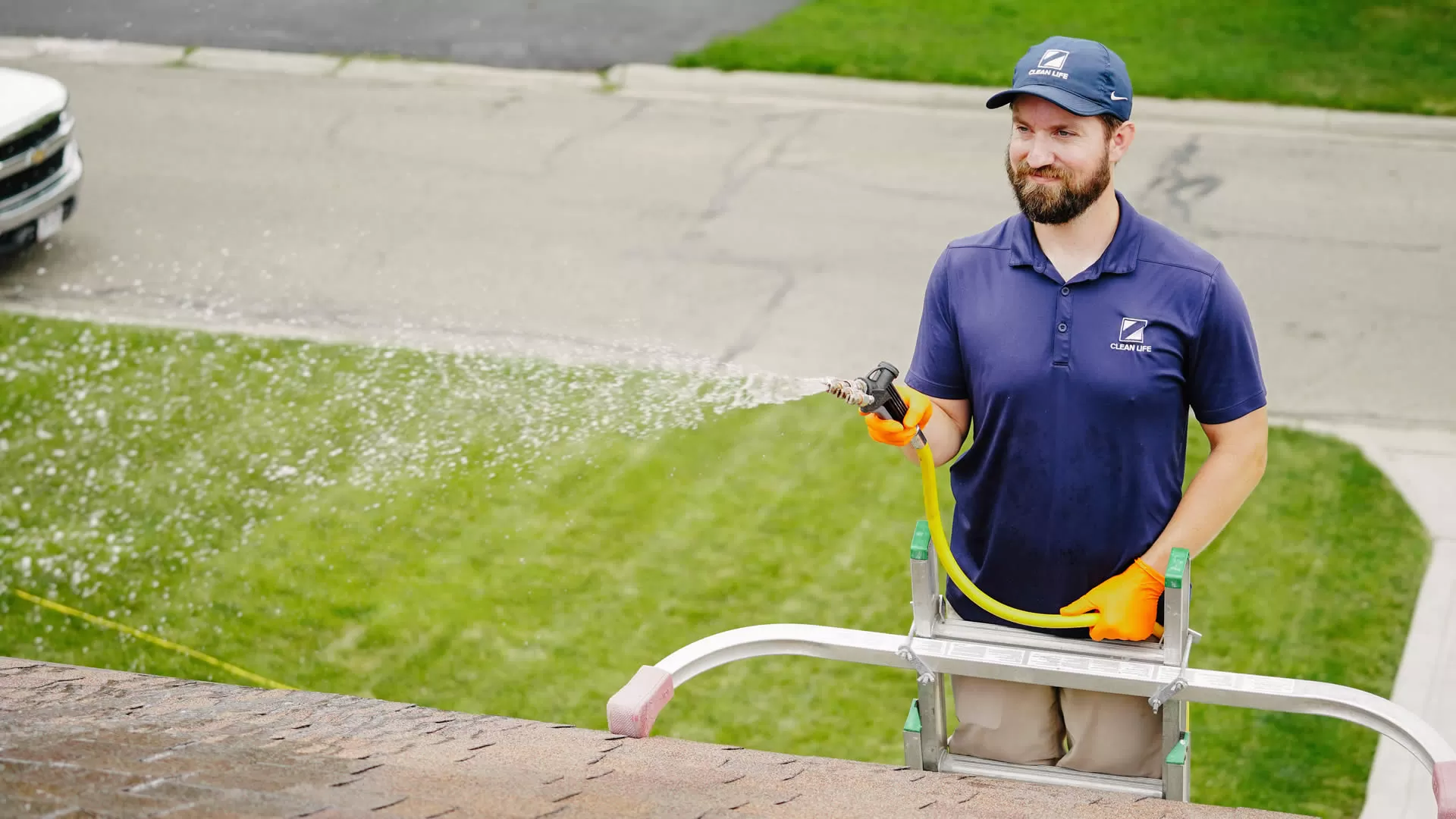Opening the Power of Pressure Washing: A Comprehensive Look at Reliable Exterior Cleansing Solutions for Decks, Fences, and Sidewalks
Pressure cleaning stands out as an important tool in exterior maintenance, effectively revitalizing decks, fencings, and pathways by getting rid of built-up dust, mold and mildew, and gunk. As we discover the ins and outs of pressure washing, it becomes evident that the appropriate approach can make a substantial distinction-- yet lots of property owners neglect crucial elements that might raise their cleaning initiatives.
Benefits of Pressure Laundering
Stress washing effectively renews surface areas, making it a necessary maintenance practice for both household and business properties. Among the main advantages of stress cleaning is its ability to boost curb charm. By getting rid of dust, mold, mildew, and crud, stress cleaning restores the initial look of surfaces, adding to a much more welcoming atmosphere. This is particularly vital for companies intending to attract consumers and for house owners wanting to maintain residential or commercial property worth.
Furthermore, pressure washing prolongs the life expectancy of surface areas. Normal cleansing can avoid the build-up of unsafe materials that lead to degeneration, saving building proprietors significant costs in repair work or replacements. Pressure cleaning advertises wellness and security by getting rid of slippery compounds, such as algae or moss, which can position risks.
One more advantage is the performance of the process. Pressure cleaning can cover big areas in a portion of the time it would certainly take using conventional cleaning techniques. This effectiveness is particularly advantageous for industrial properties that need minimal disturbance to procedures.
Getting Ready For Pressure Washing
Before taking part in stress cleaning, cautious preparation is vital to make sure ideal results and safeguard surrounding areas. Begin by examining the area to be cleaned, removing any kind of obstacles such as furnishings, planters, or ornamental items. This creates a clear office and reduces the risk of damages during the cleaning process.
Following, evaluate the surfaces for any type of loose paint, mold and mildew, or debris. Dealing with these problems beforehand can boost the effectiveness of the pressure cleaning. Scuffing off loose paint can avoid it from being forced right into the surface throughout cleaning.
Furthermore, it is vital to safeguard neighboring plants, windows, and fragile surface areas. Take into consideration covering plants with tarps or plastic bed linen and utilizing painter's tape to secure windows from water damages (Concrete Cleaning). Ensure that the stress washing machine is geared up with the suitable nozzle and stress setups for the details surfaces to prevent triggering harm
Lastly, prepare the stress washing machine by examining liquid levels and ensuring all links are secure. This preparation lays the foundation for a successful stress washing session, producing a clean and revitalized outside.
Strategies for Various Surfaces
Accomplishing optimum sanitation requires a tailored technique to various surfaces during stress cleaning. Each material, whether wood, concrete, or vinyl, demands particular methods to ensure effective cleaning without triggering damage.
For wooden decks, making use of a low-pressure setup is vital. This strategy protects against splintering and preserves the wood's integrity. Utilizing a cleansing option made for timber can boost the elimination of crud and mildew, ensuring a complete tidy.
Concrete surface areas, on the other hand, can hold up against greater stress degrees. A fan nozzle is advised for huge locations, while a narrow Click This Link nozzle can target tough stains successfully. Pre-treating stains with a degreaser can yield enhanced results, particularly for oil or grease marks.
Plastic fences require a gentler touch, similar to wood. A medium-pressure setup combined with a soft-bristle brush attachment can effectively get rid of dust without scraping the surface area. It is important to utilize a cleansing remedy specifically created for vinyl to stay clear of discoloration.
Selecting the Right Devices
Selecting the proper tools is essential for effective stress washing, as it straight impacts effectiveness and cleaning outcomes. The very first consideration is the stress washing machine itself, which is available in different types: electrical, gas, and diesel. Electric designs are optimal for light-duty tasks such as cleaning up decks and fences, while gas-powered makers offer greater pressure and are suited for tougher jobs like eliminating gunk from walkways.
Following, think about the stress ranking measured in PSI (pounds per square inch) For fragile surface areas, a lower PSI (1,500 - 2,000) suffices, while extra durable products may call for rankings of 3,000 PSI or more. Furthermore, the flow rate, measured in GPM (gallons per minute), is critical; greater GPM indicates quicker cleansing.
Nozzles play a substantial duty in attaining desired results, with various shades showing varying spray angles and stress. By thoroughly choosing equipment tailored to details cleaning tasks, you can make best use of efficiency and accomplish ideal results in your stress washing ventures.

Upkeep Tips After Cleansing
Proper maintenance after pressure washing is crucial for prolonging the life expectancy of both the cleaned up surface areas and the devices made use of. After completing your stress washing job, allow the surface areas to completely dry completely to avoid moisture retention, which can lead to mold and mildew and mildew development.
On a regular basis inspect the cleaned locations for indicators of dust build-up or damage. Scheduling routine cleansings based upon ecological direct exposure can aid maintain their appearance and integrity. For equipment upkeep, make sure that you extensively clean up the pressure washer after usage, eliminating any kind of particles from the nozzle and pipes. In addition, check the oil levels and change filters as needed to make certain optimum performance.
Store your pressure Continue cleaning tools in a dry, protected location to avoid rust and damages. Exterior Cleaning. Adhering to these upkeep ideas will not just maintain your outside rooms looking immaculate but also take full advantage of the performance and lifespan of your stress cleaning devices
Final Thought
